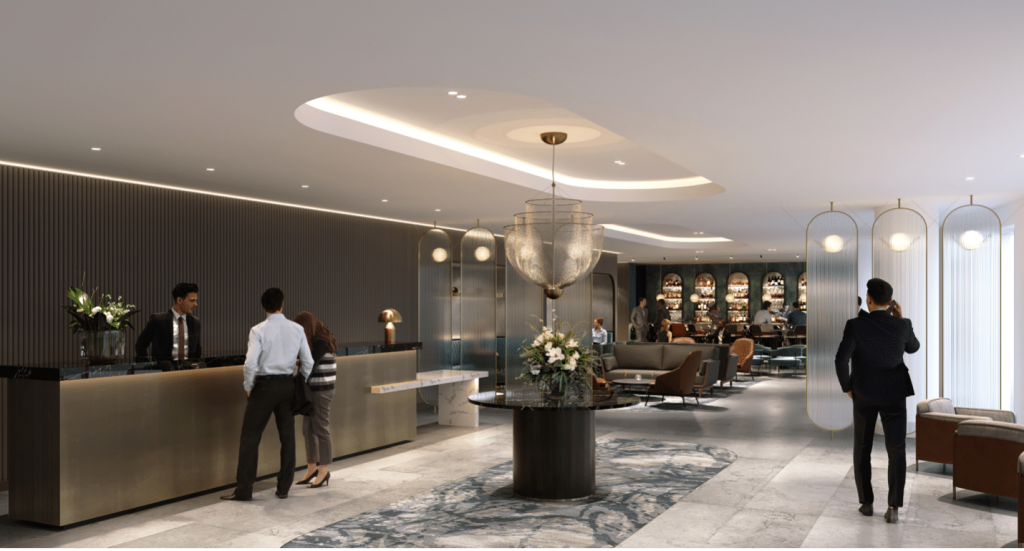A well-designed hotel room can make all the difference in creating a memorable and comfortable guest experience. Hoteliers understand that a thoughtful and inviting space can leave a lasting impression on guests, encouraging them to return in the future and recommend the establishment to others. Hertfordshire Hotel Brand Manor of Groves look into the key elements and tips for designing the perfect hotel room that meets the needs and expectations of modern travelers.
1. Space Planning and Layout
Effective space planning is the foundation of a well-designed hotel room. A well-organized layout ensures that the room feels spacious, functional, and clutter-free. Consider the flow of movement within the room and ensure that furniture is arranged to maximize space and provide easy access to essential amenities. Adequate storage solutions, such as built-in wardrobes or drawers, help keep belongings neatly organized and out of sight.
2. Comfortable Bedding and Linens
The quality of the bedding and linens can significantly impact a guest’s sleep quality and overall satisfaction. Invest in high-quality mattresses, pillows, and bed linens that provide optimal comfort and support. Crisp, clean, and soft linens not only enhance the sleeping experience but also create a sense of luxury and indulgence for guests.
3. Thoughtful Lighting Design
Lighting plays a crucial role in setting the mood and ambiance of the hotel room. Incorporate a combination of ambient, task, and accent lighting to create a versatile and well-lit space. Dimmable lights allow guests to adjust the lighting according to their preferences and needs. Additionally, consider incorporating bedside reading lights and convenient switches for easy control.
4. Functional and Stylish Furniture
Choose furniture that is not only aesthetically pleasing but also functional and comfortable. Opt for durable materials and timeless designs that withstand wear and tear while maintaining a contemporary appeal. Multi-functional furniture, such as a desk that doubles as a vanity or a sofa bed for extra sleeping space, can add versatility to the room.
5. Aesthetic and Cohesive Design
Maintaining a consistent and cohesive design throughout the hotel room creates a sense of harmony and elegance. Choose a color palette and theme that reflects the hotel’s overall branding and style. Thoughtful use of textures, patterns, and artwork can add visual interest and personality to the space.
6. Ample Storage and Amenities
Ensure that the hotel room offers ample storage space and essential amenities for guests’ convenience. In addition to standard amenities like a mini-fridge, safe, and coffee maker, consider providing thoughtful extras such as USB charging ports, in-room entertainment options, and a well-stocked minibar.
7. Privacy and Soundproofing
Privacy and soundproofing are essential factors in creating a peaceful and relaxing atmosphere for guests. Choose window treatments that offer both privacy and blackout capabilities. Incorporate sound-absorbing materials, such as carpets and drapes, to minimize noise from the outside and adjacent rooms.
8. Modern Technology Integration
Embrace modern technology to enhance the guest experience. Integrate smart features like keyless entry systems, in-room tablets for guest services, and high-speed Wi-Fi. These tech-savvy amenities cater to the needs of tech-oriented travelers and elevate the overall level of convenience and comfort.
9. Luxurious Bathroom Design
The bathroom is another crucial area where guests seek comfort and luxury. Invest in high-quality fixtures, spacious showers or bathtubs, and luxurious toiletries to create a spa-like experience. Fresh towels, ample storage space, and well-placed mirrors add to the functionality and aesthetics of the bathroom.
10. Sustainable and Eco-Friendly Design
Emphasize sustainable and eco-friendly design principles in the hotel room. Choose eco-conscious materials, energy-efficient lighting, and water-saving fixtures to reduce the hotel’s environmental impact. Guests increasingly appreciate and value environmentally responsible practices, which can enhance the hotel’s reputation and attract eco-conscious travelers.
In conclusion, designing the perfect hotel room requires a careful balance of aesthetics, functionality, and comfort. Paying attention to space planning, comfortable bedding, lighting design, functional furniture, and cohesive aesthetics can create an inviting and memorable guest experience. Incorporating modern technology, sustainable practices, and thoughtful amenities further elevate the hotel room’s appeal and cater to the needs of today’s discerning travelers.


